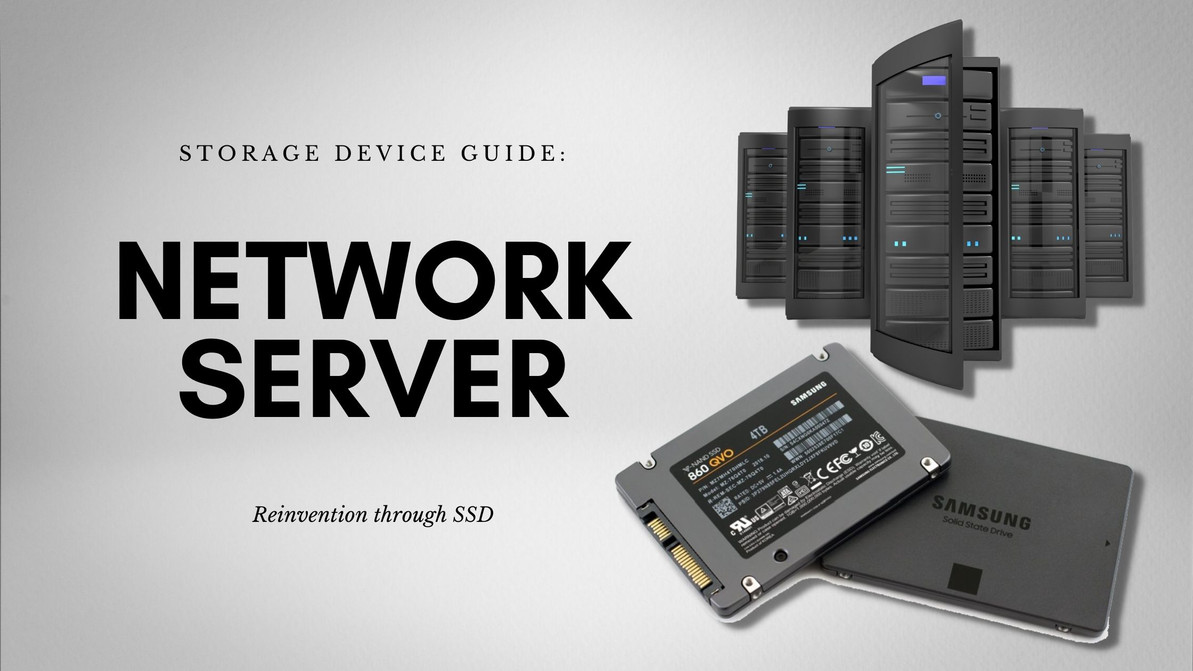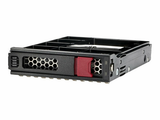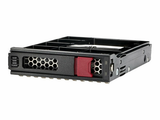Storage Device Guide: Network Server Reinvention through SSD
Solid-state disk or SSD gives both individual users and network servers the opportunity for improved speed and better performance. Switching to SSD offers high performance at a level in which an HDD cannot keep up.
However, switching to an SSD is a big step for a network server. It will affect a lot of things, and it will affect operations. Some may opt to stay on HDD for many different reasons, or some may be on the fence about SSDs.
The fundamentals of storage have not changed. Every user and every big company with network servers are looking for reliable means of serving and protecting data. For a long time, HDD has been doing a great job doing just that, but SSD can now deliver with greater efficiency and performance.
How Can Switching to SSD Improve Your Network Server
Learn about how SSDs may be able to reinvent your network server as you know it.
SSD prices are dropping, making "efficient" more affordable.
SSDs are more expensive than HDD. However, they are also more efficient and more durable than the traditional hard disk. But consumer-grade SSD prices have dropped since 2013. The same SSD that would have cost about $165 or 69 cents per gigabyte would cost roughly $60, or 25 cents per gigabyte today.
The price drop has reached enterprise-grade SSDs as well, which means high-performing servers are within reach for businesses looking to improve their network servers.
Hard Disk Drives are about to hit the performance wall.
Hard drives are about to max out their performance, but SSDs are far from hitting a dead end. Manufacturers can still improve SSDs in many ways. They can still improve speed, efficiency, and even size.
Manufacturers are still improving HDDs by adding advances such as heat-assisted magnetic recording (HAMR), however, HDD technology is almost at the point of hitting the performance wall.
Since HDDs use drive platters to perform their functions, improving their speed will require making these moving parts faster. However, there is a limit to improving their speed due to the extreme amounts of power that the device would need to spin the platters beyond 15,000 rpm.
On top of the restriction due to the very parts that make it function, improving speed also means dealing with more heat and reliability issues. Due to its design, an SSD is not limited by any of the things that hinder HDDs from further advancing.
SSD reliability guarantees are getting better.
Generally, SSDs are considered to be more durable and reliable than HDDs due to their design. HDDs have disk platters that spin as they read or write data, and these moving parts tend to wear and tear.
Again, SSDs do not have these moving parts, thus making them less likely to wear and tear soon. However, SSDs still do have finite lifespans.
For instance, some sectors can become unusable after several overwrites. SSDs do come with extra cells or sectors to minimize this issue.
You should get the appropriate type of SSD for the job to ensure that it lasts longer. SSDs are expensive, so it may be tempting to get consumer SSDs because it costs less than enterprise SSDs, but keep in mind that enterprise SSDs have longer lives.
HDD: Traditions Die Hard
Despite the gap between SSDs and HDDs, the traditional hard disk drives still matter. It is still a decent storage option for network servers. Although switching to SSD has so many benefits, and even if its price has dropped since it first hit the market--- HDDs are still too cheap to ignore for enterprise storage.
As mentioned previously, solid-state drive prices have dropped in recent years and it keeps on dropping every year. In fact, some experts in the industry say that SSD will hit price parity soon.
Although there was a price crash in 2018 and some time into 2020 due to oversupply, the manufacturers have since slowed down the transition and production ramp-up which allowed demand to catch up to supply toward the end of 2020.
Since SSD has not reached price parity and there is still a sizable price gap between SSDs and traditional hard disk drives, companies cannot simply ignore HDDs as a storage option for their network servers.
However, SSDs are slowly replacing HDDs on consumer-grade devices. For instance, most laptops come with an SSD nowadays.
Surely, once the price gap closes between enterprise-grade HDDs and SSDs, more and more network servers will choose solid-state drives instead of HDD. But until then, HDDs are decent storage devices that have been tried and tested by time.
Regardless of the benefits of switching to SSD, acquisition costs still remain as the primary metric that companies use as a source of comparison in evaluating storage.
Speed and performance are not always the major deciding factor for every single company out there, which makes HDDs a decent and affordable option.
Bottomline
Solid-state drives have the potential to reinvent network servers as you know it. SSDs offer a faster and more efficient way to store data. It can also save your company some money since it uses much less power to operate compared to the traditional hard disk drives.
Despite all the benefits of switching to SSD, due to the unbeatable and affordable price of HDDs-- it is difficult to not see it as an option. After all, it is still a good option for storage if speed is not the top priority in your network server.
Recent Posts
-
Solid Confidence in Every Byte: Powering ProLiant Gen10 and Gen10 Plus Servers with the HPE 960GB LFF Value SAS SSD
HPE 960GB 3.5-inch LFF Digitally Signed Firmware SAS-12Gbps Mixed Use Value SAS Multi Vendor SSD for …Dec 13th 2025 -
Where Reliability Meets Everyday Speed: Empowering ProLiant Gen9 and Gen10 Servers with the HPE 960GB LFF SATA Mixed Use SSD
HPE 960GB 3.5-inch LFF Digitally Signed Firmware SATA-6Gbps Mixed Use SSD for ProLiant Gen9 and Gen1 …Dec 12th 2025 -
The Titanium Heart of Your Datacenter: Unleashing Power with the HPE 960GB LFF Digitally Signed Firmware SAS Enterprise SSD
Powering Enterprise Reliability with the HPE 960GB 3.5-Inch LFF Digitally Signed Firmware TLC SAS-12 …Dec 10th 2025




